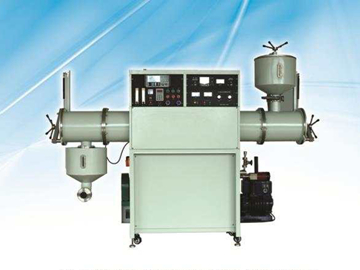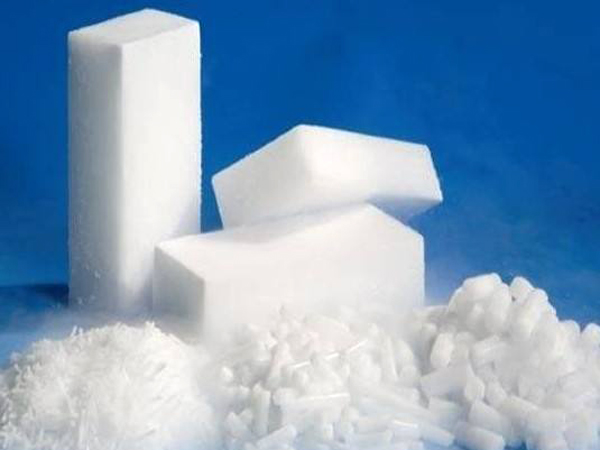The problem of the fatality of mobile incendiary LNG
Sources:This site | Release date:
2018-04-18
| Browsing volume:
Key words:The problem of the fatality of mobile incendiary LNG
LNG is a kind of high-quality, high-efficiency and economical clean energy. Under the fiercely competitive market environment, more and more large-scale trucks have begun to use LNG as their power source for their application in the areas of road logistics, special vehicles for urban construction and other fields. Has also been rapid development. At the same time with the development of various security incidents, the safety of LNG vehicles has become the most concern for every driver driving LNG vehicles.
Recently, some card-friends broke out of a certain LNG tractor in Shanxi Province. Due to the huge impact force, the cab was pushed back and the LNG gas tank in the back was squeezed. Then LNG leaked and burned. Due to extreme deformation of the cab, even if the driver has climbed to the top of the cab, it is still difficult to escape the jam.
What is the problem with LNG leakage combustion?
In fact, as long as you carefully read the introduction of LNG gas tanks, you will know that the current production of gas tanks are characterized by high temperature, anti-collision and so on. In terms of individual tanks, the safety is still very high. Then the question came, where did the burning come from?
LNG fuels are ultra-low temperature fuels that undergo a process of returning from liquid to conventional natural gas before entering the engine. Some LNG vehicle combustion accidents are caused by the natural gas transmission link that occurs after LNG has returned from liquid to gas and before entering the engine.
Note: LNG in ultra-low temperatures does not burn, but natural gas produced after vaporization can burn when it reaches the ignition temperature and concentration.
The cause of the fire: The cause of the fire may be that the LNG is ignited after the vaporization due to a broken pipe or other causes that caused the leaked natural gas to encounter an unexpected spark. Coupled with the cut-off valve or failure due to cut-off valve caused continuous supply of gas, so that natural gas is continuously generated and involved in combustion. In addition, even if the shut-off valve on the tank is immediately activated, LNG is no longer output, and the remaining gas in the buffer tank may ignite the cab or other flammable items.
Where are the remedial measures?
At present, many CNG natural gas buses in our cities, if carefully studied by the card-friends, will find that many of the natural gas buses are equipped with fire extinguishers.
The majority of buses currently use dry powder “fire extinguishers”, and a small “fire extinguisher” can cover almost 3 cubic meters of space. When the heat-sensitive wire on the fire extinguishing bomb connection device encounters an open flame or the temperature of the zone reaches a certain level, the “fire extinguishing bomb” will start immediately and the fire in the 3 cubic-meter space can be extinguished within 1 second.
Why LNG vehicles do not consider joining this remedial device? The car company can fully negotiate with the “fire extinguishing bomb” manufacturers to develop customized products suitable for LNG trucks, so that even if the gas leaks and burns, it will have the opportunity to extinguish the fire at the beginning of the fire and provide sufficient time for the occupants to escape.
What seems to be a reasonable back-to-back escape is the opportunity to escape. It is believed that every card friend who has opened or seen LNG trucks will find a unique feature. All LNG tractor gas tanks are assembled behind the cab. Back-up gas tanks seem to be "reasonable" space utilization, but who knows that the crisis will die? At present, almost all domestic tractors adopt the cab rearward shifting technology in the collision safety of the cab, and the rear of the main vehicle has a certain release space. This part of the space saved the lives of drivers and passengers under certain conditions in the event of an accident. The backup gas storage tank of the LNG tractor just used this "buffer zone" for "reasonable" use. When a collision accident occurs, the cab has no backward space, and the LNG gas tank collides with the frontal energy. The interaction makes it easy to press the entire cab into a piece of cake. This is why even if the driver climbed to the top of the cab, he could not escape the fate of being stuck in the extremely deformed cab.
Join the auxiliary system to escort safety
Although we have always been pitted in the back tanks of TUG's LNG vehicles, car manufacturers are gradually starting to introduce side-mounted tanks. Of course, this is not safe enough. High-tech products should be considered, such as the channel deviation system, anti-collision warning system, fatigue driving reminder system, etc. Although the acquisition cost will increase, the device that reduces the accident rate and improves vehicle safety may have.
Please indicate the source of the reprint(The problem of the fatality of mobile incendiary LNG:/companynews/422)
Relevant articles
Related products
-

HD-2 Vacuum Plasma Seed Processor
-

Gene-Storage Tank
-
![MVE CryoCart MVE CryoCart]()
MVE CryoCart
-

Oxygen for Medical Use
-

Argon for Industrial Use
-

Dry Ice
-

Carbon Dioxide for Medical Use
-

Nitrogen for Medical and Industrial Use